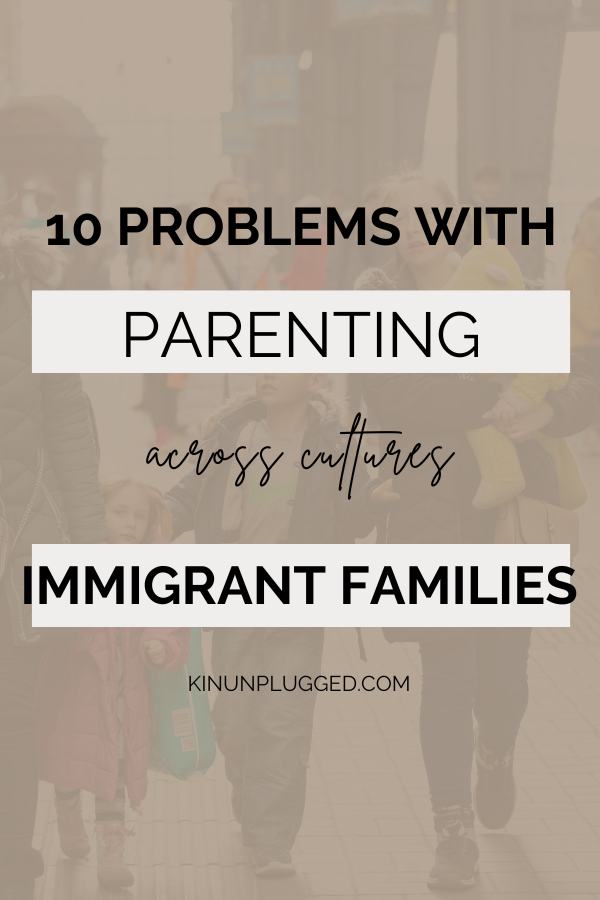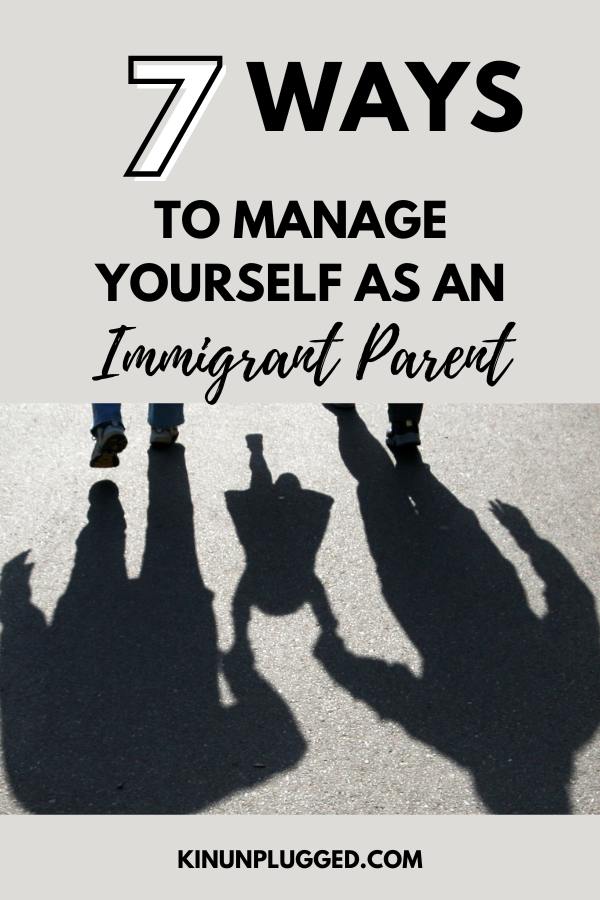Moving from one country to another is hard enough for you as an individual. When you have the added struggle of parenting across cultures though, it can become extremely confusing. How do you raise your first generation kids in this environment that’s not entirely familiar to you?
In this article, we’ll look at some of the reasons why being a first generation immigrant family can be tough. We’ll also consider some ways that you can make the process that little bit easier and at the same time, also more interesting for you and your family.
What are the potential conflicts between your parenting style and the societal norms of the new country?

1. Discipline approaches
Traditional methods (e.g., strict discipline or physical punishment) may clash with a country’s emphasis on positive reinforcement and non-physical discipline.
2. Independence vs. collectivism
In more individualistic societies, there’s often an expectation for children to be independent early on, while some cultures emphasize family interdependence and obedience.
3. Parental authority
In some cultures, parental authority is rarely questioned, whereas the new society may promote more democratic parenting styles where children’s opinions are considered.
4. Academic expectations
Different expectations around education can cause conflict, such as a strong focus on academic achievement in immigrant families versus a more balanced focus on extracurricular activities and personal development.
5. Gender roles
If the home culture has traditional gender roles, this can clash with a new country’s norms of gender equality and shared parenting responsibilities.
6. Approach to open communication
Some immigrant families may prioritize respect and obedience over open dialogue, while the new culture encourages children to express their thoughts freely.
7. Perceptions of extended family involvement
Immigrant families may involve extended family in child-rearing decisions, while the new country may see this as overstepping or intruding on the nuclear family’s autonomy.
8. Work-life balance
Societal norms around work-life balance may differ, with immigrant parents potentially being more focused on work and providing for the family, while the new society values more active parental involvement in daily activities.
9. Privacy and personal space
Cultures that value communal living may struggle with societal norms that place high importance on personal space and children’s right to privacy.
10. Expectations of respect and obedience
Cultural norms may expect children to show deference to adults at all times, while the new country may value a more relaxed, peer-like relationship between parents and children.
The role of community in raising first-generation kids

For a first generation immigrant family, having a strong community can make all the difference in raising well-adjusted kids. Support systems from both the immigrant community and local families provide children with a sense of belonging and help bridge the gap between cultures. Connecting with other immigrant families offers a shared understanding of cultural values, language and experiences, allowing children to stay connected to their heritage.
This helps reduce feelings of isolation for both parents and children, making the adjustment to a new environment smoother.
Engaging with local families, on the other hand, allows kids to integrate into their current culture and build friendships that support their social and emotional development. For parents, connecting with local families creates opportunities to learn more about the new culture, navigate the school system and exchange parenting strategies. Together, these community connections provide a balanced environment that helps children embrace both their heritage and the realities of growing up in a new country.
10 Practical tips for overcoming language barriers or cultural misunderstandings

1. Create a multilingual environment at home
Encourage language development by speaking both your native language and the dominant language spoken in your new country. Designate specific times or activities (for example, mealtimes, storytime) for each language. This approach helps children become comfortable with both languages naturally.
2. Encourage bilingualism early on
To push for bilingualism in first generation immigrant families, introduce both languages as early as possible. Children’s brains are incredibly adaptable, making early exposure critical for fluency. Read bilingual books, watch children’s shows in both languages, and sing songs from both cultures.
3. Use visuals and gestures when words fall short
When faced with language barriers, use visuals and gestures to communicate effectively. Show pictures, use props or act out what you’re trying to say. This can be especially helpful for children learning a new language or for communicating with relatives who don’t speak the same language fluently.
4. Establish “culture time”
Set aside regular “culture time” to explore the traditions, values and history of both cultures. Discuss cultural norms, celebrate traditional holidays, and cook family recipes together. This intentional practice helps bridge the gap and creates respect for both backgrounds.
5. Explain cultural differences without judgment
When cultural values clash – whether it’s about parenting styles, discipline, or family roles – approach these conversations without judgment. Use phrases like, “In my culture, we tend to [explain value]. How is it different for you?” to encourage more open conversation rather than confrontation.
BUY: Little black girl wall art | Digital Printable Black Affirmation | Printable wall art black girl magic
6. Seek bilingual education programs
If possible, enroll your child in bilingual education programs or language immersion schools. These environments reinforce both languages and help your child maintain fluency, which can sometimes decline if they’re only exposed to one language outside the home.
7. Use language apps for daily practice
Encourage the use of language-learning apps (for example, Duolingo, Babbel) for the entire family. These apps make language acquisition fun and structured. Parents can use them alongside children to show that language learning is a family effort.
8. Involve extended family for even deeper language exposure
Extended family members can be a great resource in parenting across cultures. If grandparents or relatives speak your native language, encourage regular conversations through phone calls or video chats. This helps reinforce language skills and keeps children connected to their heritage.
9. Think cultural “mixing” rather than suppression
Rather than choosing one set of values over the other, find ways to blend cultural values that are important to both parents. For example, if one culture emphasizes respect for elders and the other values independence, teach children how to balance both by being respectful and expressing their opinions thoughtfully.
10. Make support networks with similar experiences
Link up with other first generation immigrant families who are navigating the same challenges. Being part of a community where you can share strategies, ask for advice, and even celebrate bilingual milestones can make a huge difference in overcoming language barriers and cultural misunderstandings.
How can parents manage their own feelings of guilt, stress or isolation in the process?
Raising children in a new cultural environment while trying to honor your heritage can be incredibly challenging. Immigrant parents often face the dual pressure of maintaining their cultural identity while also making sure their kids thrive in a different society. That balancing act can bring about feelings of guilt, stress and isolation.

To manage these emotions and effectively raise first-generation kids, try these ideas:
1. Normalize and accept your feelings
It’s natural to feel guilt or stress when you see your children embracing a culture that’s different from your own. Rather than suppressing these emotions, acknowledge them as part of the journey. Remind yourself that your role is to provide your children with the tools to thrive – both from your cultural heritage and their current environment.
2. Build a support network
Connect with other immigrant parents who are also raising first-generation kids. Sharing experiences and discussing your struggles with others who understand your challenges can significantly reduce feelings of isolation. Online communities, local cultural organizations or even informal groups can provide a sense of belonging and solidarity.
3. Practice self-compassion
Recognize that there is no “perfect” way to navigate this journey. You are doing the best you can for your family in a complex situation. Set realistic expectations for yourself and practice self-compassion.
When you feel overwhelmed, pause and remind yourself that it’s okay to prioritize your emotional health too.
4. Get professional guidance
You may need to think about speaking with a counselor or therapist who specializes in immigrant experiences or cross-cultural family dynamics. They can offer strategies for managing stress, navigating conflicting emotions and finding balance between cultural values.
5. Integrate your heritage into daily life
Balance the stress of adapting by finding small ways to honor your background daily. Cook traditional meals, celebrate cultural holidays or teach your children stories from your upbringing. These practices reinforce your cultural values without feeling like you have to choose one identity over another.
6. Reframe cultural adaptation as an enrichment
Instead of seeing it as losing a part of your heritage, reframe your experience of raising first-generation kids as a chance to enrich their lives. They are gaining the strength and resilience of your culture while developing the skills to navigate a new one. This mindset can ease the guilt of “not doing enough.”
7. Communicate openly with your children
Share your own experiences and emotions with your children, letting them see that balancing two cultures is complex but manageable. Encouraging open dialogue helps them understand your struggles and can build a bridge of empathy between your worlds.
What are your best tips for parenting across cultures? What do you do to raise your immigrant kids in a way that honours your culture?
READ: 9 Holidays around the world for kids (for teachers + parents!)




